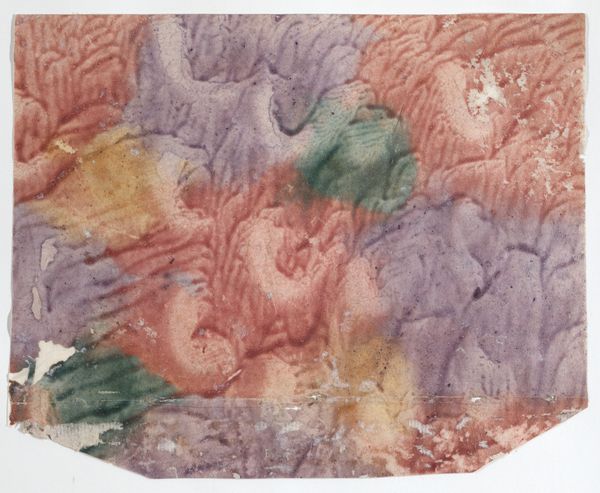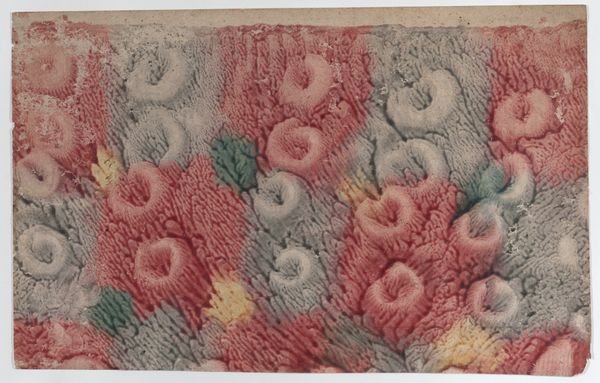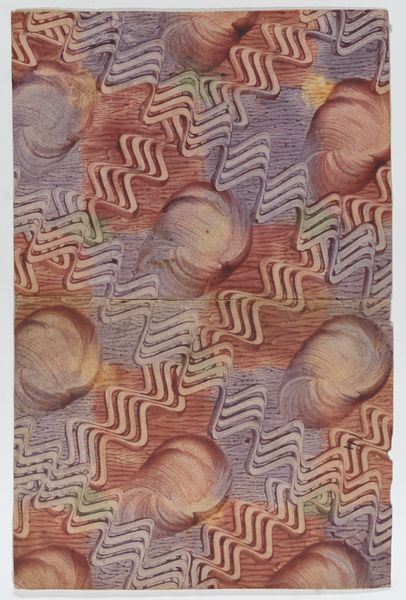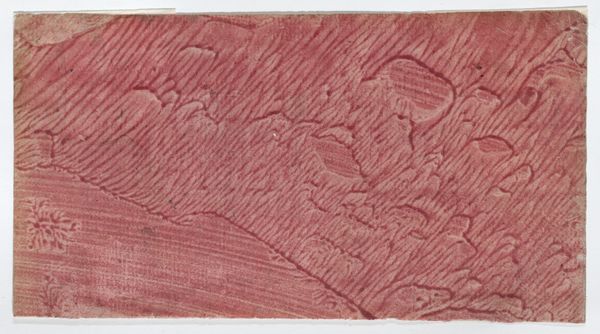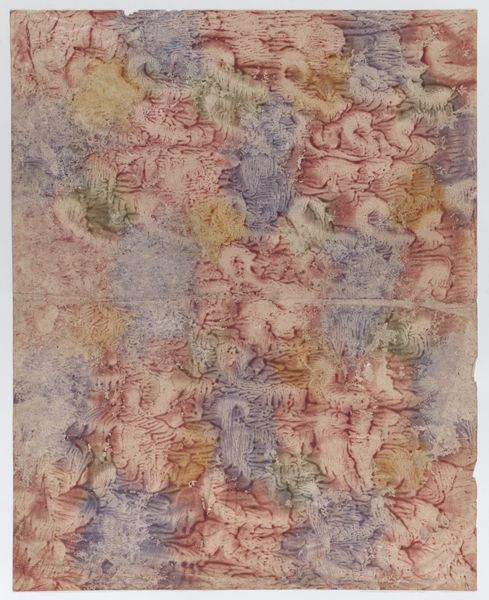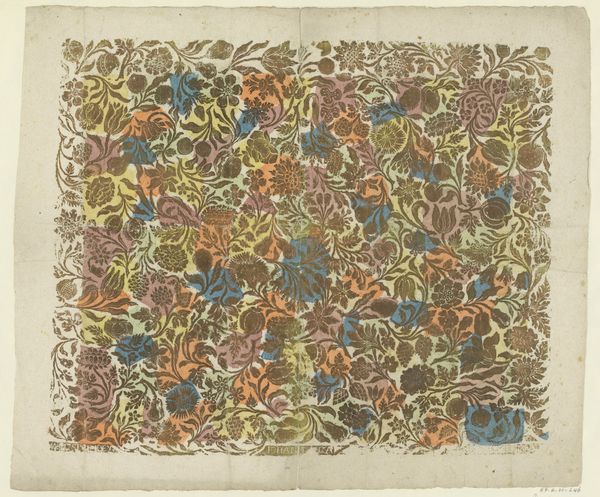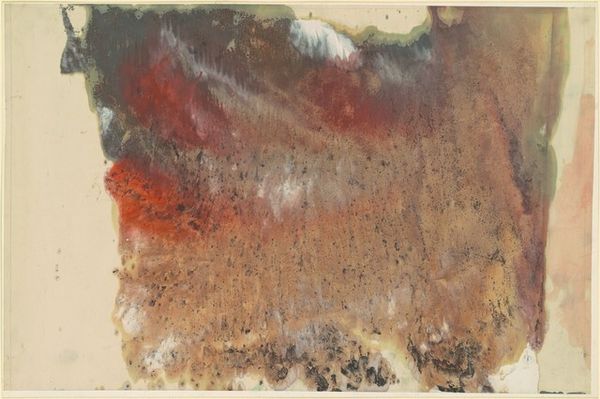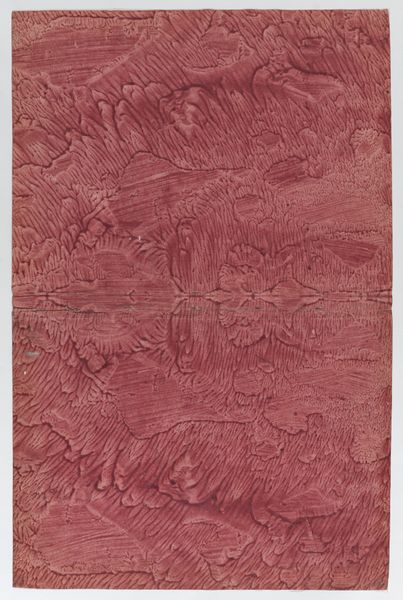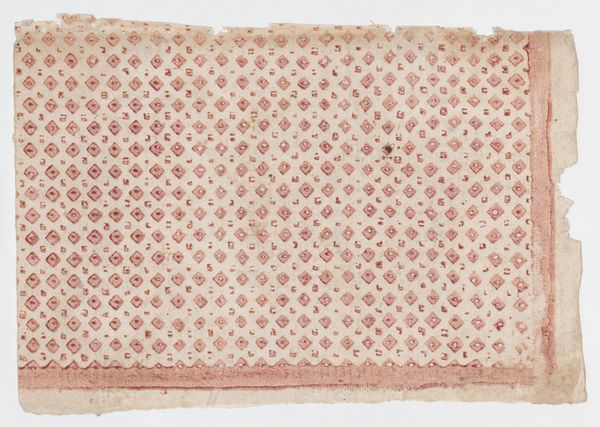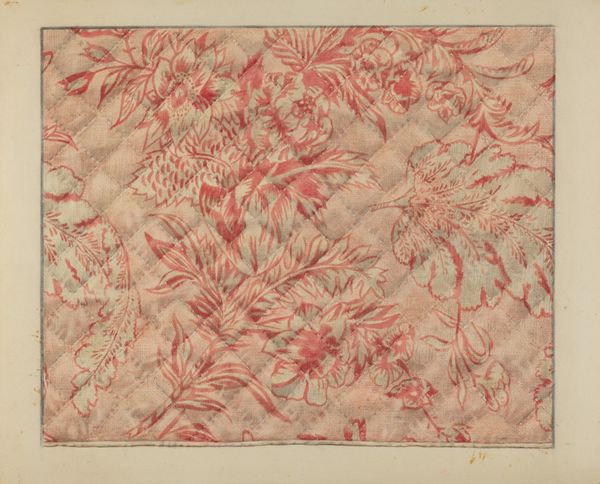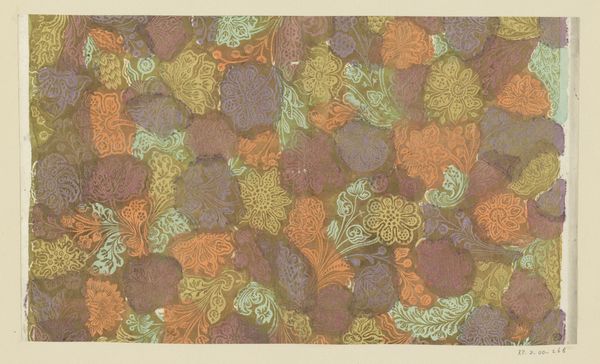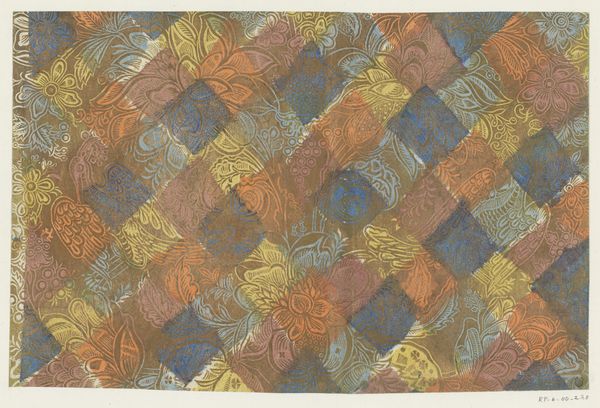
Paste paper with red, purple, yellow, and green design 1700 - 1800
0:00
0:00
drawing, mixed-media, print, paper
#
drawing
#
mixed-media
# print
#
paper
#
geometric
#
abstraction
Dimensions: Sheet: 5 1/2 × 7 5/16 in. (14 × 18.5 cm)
Copyright: Public Domain
Editor: Here we have an intriguing piece from the Metropolitan Museum of Art, an anonymous "Paste paper with red, purple, yellow, and green design," dating from 1700 to 1800, created with drawing, print, and mixed-media on paper. It strikes me as quite tactile, almost like looking at dyed fabric. What's your interpretation? Curator: It’s the process that captivates me. Think about the labor involved in creating this paste paper. What kind of social function did it serve? The abstraction, the geometric forms – what were they printing, and for whom? Was it a utilitarian object, elevating the everyday? Was there value in such material production, and what implications does that hold for notions of ‘high’ art at the time? Editor: That’s a great point! I hadn’t considered the socio-economic implications behind something so seemingly simple. Did paste papers have any specific functions back then? Curator: Yes. Often, paste papers served as decorative covers for books, lining for chests, or even for wrapping goods. Think about the person making the paste. It was laborious! The means of production – the labor and the materials used. It raises questions about class and access to artistic expression, wouldn't you say? Editor: Absolutely. The act of mass production is quite fascinating! Thank you. That’s helped me see this artwork in a whole new light. Curator: Likewise. It reinforces how deeply intertwined artistic expression is with everyday materials.
Comments
No comments
Be the first to comment and join the conversation on the ultimate creative platform.
